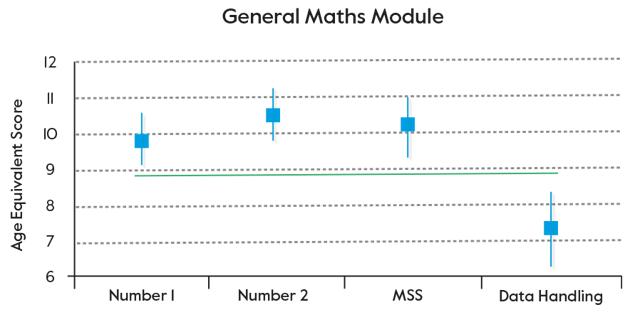Striking a balance between student potential and teacher expectations
As a classroom teacher I had many conversations about flight paths and the validity of GCSE target grades. The data we were presented with at times...

Login | Support | Contact us
Lucy Baker : Jul 27, 2023 10:41:18 AM
4 min read

Lucy Baker, a Cambridge Insight assessment advisor and former primary school teacher, hosted a webinar where she shared her expertise and insights on improving primary student outcomes. Drawing from her teaching and leadership experience, Lucy has summarized her ideas below to assist educators in enhancing student outcomes and assessment practices.
As educators, we hold a significant responsibility in shaping the learning experiences and outcomes of our primary students. By implementing effective strategies and creating an encouraging environment, we can positively impact our students’ academic progress and overall development.
Here are my five quick tips for educators seeking to improve primary student outcomes.
A positive and calm classroom environment sets the foundation for effective learning and assessment. Students can often feel particularly anxious or demonstrate behaviour that shows they are under stress at times of testing, such as end of year tests or Year 2 and Year 6 SATs.
You can create a calm atmosphere and support students by using positive language to emphasize their strengths, improve motivation and encourage them in the process of testing. Praising the pupils after assessments can boost their confidence and motivation.
It can also be really helpful to have open discussions with your students about their results and their feelings towards the learning topics, making sure that you encourage them to express their thoughts and concerns. Providing opportunities for student choice and voice can empower them to take ownership of their learning.
Even with formative assessments, such as Cambridge Insight’s baseline tests, conducting tests over a period of time and explaining that they are 'low stakes' can alleviate pressure and anxiety.
By explaining the purpose of any tests and highlighting the positive aspects of evaluating their progress and improvement, students can better understand the value of their efforts.
Collaborating with colleagues is essential in schools as it promotes teamwork and efficiency. By working together, valuable time can be saved, and great ideas can be generated.
In my teaching practice, I found it especially beneficial to review reports together, and collectively plan interventions or lesson learning objectives (LOs). Sharing ideas and seeking support from colleagues when I was unsure about how to best support a child or address a specific area of learning was a great form of readily available CPD.
Sharing successful interventions and lesson plans that have been previously implemented can benefit the entire team. Additionally, identifying children with similar areas of development from different classes and grouping them for targeted interventions can be particularly helpful, especially in situations where there is a lack of teaching assistants (TAs) or additional adult support.
Intervention planning plays a crucial role in supporting students' academic progress, and our assessments for primary aged students offer valuable feedback that can really help in this process.
The feedback reports generated from our assessments give you insightful data that can help you to effectively plan interventions for your class. The reports will help you identify specific areas of focus and target them over a half term, allowing you to closely monitor and assess the pupils' improvement. This enables you to then transition into another area of development, ensuring a well-rounded approach to their learning.
When designing interventions, it is important to create short and informative activities that have clear learning outcomes. These interventions can be seamlessly integrated into your lessons or assigned as morning tasks throughout the week, allowing for consistent reinforcement and embedding of the targeted learning objectives.
Utilizing the data provided in the Cambridge Insight reports can really help in building clear learning objectives for individual students and whole class lessons.
As all educators know, all effective lessons and interventions are based on having a clear learning outcome (LO). By looking at the data carefully, you will be able pinpoint the key learning areas which are challenging the whole class or an individual pupil.
For example, for one pupil using the ‘Pupil attainment profile’ is very beneficial in identifying if a pupil may have any additional needs, a lower level or excelling and above their age expected learning.

Giving a visual picture of a test result. Showing the significance of a result. This example displays the Maths module component parts.
From this report, you will be able to identify a few key areas of learning they need support in and will be able to create targeted LO’s.
For a whole class approach, I recommend looking very clearly at the data from the ‘Age Equivalences’ or ‘Standardised Scores’.
This table displays the Reading and Maths age equivalences for this group example pupils.
| Age Equivalent Scores (Years:Months) | |||
| Achievement | |||
| Name | Age (Years:Months) | Reading | GenMaths |
| Georgina Chaffinch | 8:0 | 11:2 | 10:6 |
| Mike Falcon | 8:0 | 10:9 | 8:11 |
| Ronnie Peregrine | 8:7 | 12:11 | 10:0 |
| Reuben Robin | 8:6 | 10:9 | 8:10 |
Displays the results for a school's pupils compared to other pupils who have taken the same assessments.
| Name | Reading | GenMaths | Mental Arithmetic | Developed Ability |
| Jamie Bittern | 106 | 111 | 110 | 132 |
| Nicola Bullfinch | 85 | 79 | 90 | 131 |
| Iain Crow | 121 | 112 | 113 | 120 |
| Salim Gull | 115 | 92 | 87 | 114 |
Results can be sorted to show the highest scorers in each reported area. The example shown above has been sorted by the Developed Ability standardised scores.
These reports will give you key data about the whole class' ability. From these reports, I would recommend going through and identifying where the lower scores are for the majority of the class. Then you will be able to link the area of weakness to a key area of learning which needs targeting.
When reviewing the reports, it is recommended to use the national curriculum (NC) statements to identify specific learning areas that are highlighted. This will help you create a medium-term plan of learning objectives that effectively address any gaps in knowledge or skills.
By mapping out a clear learning journey based on the insights from the Insight reports, you can ensure a comprehensive and targeted approach.
Make sure the learning objective has a measurable outcome and regularly use formative and summative assessment to ensure the class have achieved the LO.
We know that primary students have a range of learning preferences, abilities, and interests. To personalise their learning, we need to differentiate instruction, activity or expectations.
Differentiation can be applied to accommodate individual needs during all assessments, even our baseline assessments.
For instance, you can:
Improving primary student outcomes requires a holistic approach that considers various aspects of the learning environment. By implementing these five quick tips, you are reinforcing the uniqueness of each student to help every child reach their full potential and lay a strong foundation for their lifelong learning journey.

As a classroom teacher I had many conversations about flight paths and the validity of GCSE target grades. The data we were presented with at times...

By David Richards, Senior Leader, Vinschool Central Park, Vietnam In international schools, teachers and educators face an additional challenge when...

The transition from Year 6 to Year 7 is a significant milestone for students and their parents. It highlights the process of growth, discovery and...